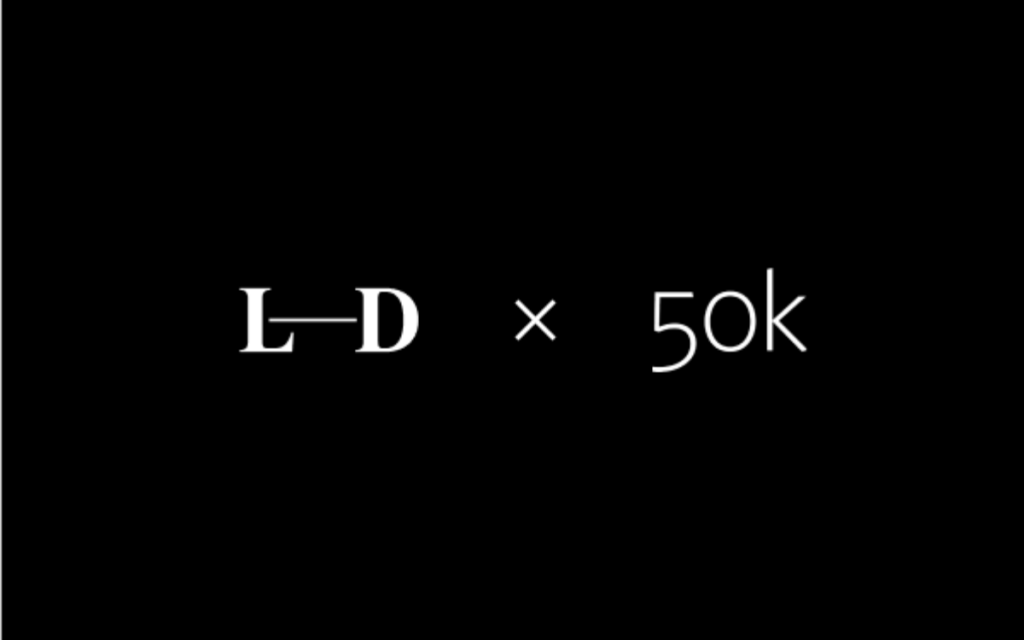How Our Rebrand Became an Ode to the Em Dash
Atlantic 57 rebrands as Long Dash, and the punctuation mark could not be more fitting
Karen Houston is a senior editor for Long Dash's newsroom projects. She manages publication operations for leading global professional services firms.
We have a new name, and it is an homage to the em dash—the Long Dash.
As one of our team’s editors, upon hearing our new name, I thought, finally, finally, punctuation will have its day. It will be properly recognized for the elegant guide that it is for readers. Punctuation marks are a place for readers to land, even if for a split second, as they orient themselves before proceeding in the open ocean of the written word.
“To dash” is “liveliness in style and action,” according to my good friend Merriam-Webster. To dash can also mean to strike, to sprint, to damn it all! Or should I say, d—n it all. The preceding “long” in our name carries the qualities that balance the spirit of the dash; it is the voice that grounds us and ensures the resilience of our work.
As a punctuation mark, the em dash is complex in that it has contradictory talents; it acts as an idea-elucidator—and sometimes, as you saw above, a sensor. It is wildly versatile, meaning it is conveniently difficult to use incorrectly. Don’t understand how to properly use commas? Nobody does! They are confusing and constrained by conditions of prescriptive grammar that have to be present to warrant their use. But em dashes aren’t. Go ahead and try it—switch out that comma for an em dash. Nice, right?
As the creative consultancy Long Dash, our intention is to embody the spirit of the em dash, in part meaning that we want to do for brands what the em dash does for writing: It begs a pause, prompts a deeper explanation, and occasionally acts as a course-changer. We approach each part of a brand’s experience with this in mind, from consumer journeys and product design to employee experiences. Beyond the punctuation metaphors, our name is a nod to our journalistic roots and represents both an enthusiastic sprint and the longevity of our ideas.
But we’ll come back to Long Dash later. Let’s talk about this gorgeous punctuation mark. It has been through a lot over the last few centuries, and we nearly lost it to the typewriter!
The Em Dash Is Born
The em dash’s roots are a little murky, but Keith Houston (no relation) shares his research on the mark in his book, Shady Characters: The Secret Life of Punctuation, Symbols & Other Typographical Marks. According to Houston, around 1200, an Italian scholar, Buoncompagno da Signa, devised a system with only two punctuation marks. One of these two marks, a suspensivus, or a slash (/) for those of us not enrolled in Hogwarts, was originally used to indicate a comparatively short pause. The other mark (–) was a virgula plana, or “level virgule” (a rod or staff) representing a “final pause or stop.” Houston notes that “the virgula plana’s function as a major pause is the ancestor of the dash’s modern use to surround parenthetical clauses, which when spoken, warrant a pause on either side.” Sounds plausible.
During the course of the following eight centuries, the virgula plana embarked on its own rebrand. It became the em dash, as the length of the dash was originally equal to the length of the letter m. It also battled for survival, especially against the limited number of characters allowed on typewriter keys. Houston notes that in the late 1800s, the “wretched ‘hyphen-minus,’ an interloper [was] introduced to the dash’s delicate habitat” and that its “privileged position … has led to it impersonating dashes … with alarming frequency.”
Sign up for OnBrand
Our weekly digest featuring ideas on the future of brand.
They say imitation is the best form of flattery, but we’ve all seen this––right? Why use two hyphen-minuses when you could use the swan of punctuation—the em dash? Honestly, most of us just don’t know how to create it. Y’all, it’s option, shift, hyphen on a Mac and alt 0151 on a PC.
Punctuation’s Own Age of Excess
So what about the comash? Colash, anyone? OK good. I didn’t know about them, either. But apparently, for centuries, we were putting commas, colons, and even semicolons right up next to em dashes! We all had our awkward years, and I consider this period of time the em dash’s teens. It needed to try on a few looks. Luckily, it eventually saw the power of its own simplicity.
Houston provides the example of Shakespeare’s Othello, wherein you see multiple examples of this, including: “O strumpet, — weepest thou for him to my face?” and “O that’s an honest fellow: — do not doubt, Cassio.”
“As with all good parties,” Houston notes, “this two-century-long festival of typographic excess had to come to an end.” But not before one last notable effort by author Nicholson Baker.
According to Houston, Baker “slipped a semi-colash (;—) into an article he pitched to The Atlantic in 1983.” The mark was rejected by the editor and, Houston notes, “the day of the comash was over.”
Our New Frontier
As you may know, The Atlantic is actually where Long Dash originated. Our connection to the publication has shown us the power of approaching our work in the way journalists approach stories—yes, by first rejecting the comash, but also through a commitment to investigative integrity and understanding the special resonance of storytelling.
We are here in service of pausing, elucidating, contextualizing—even changing course, if that’s what’s called for. That’s what our new flag represents. It is “liveliness in style and action.” It’s a dash with endurance. It’s Long Dash.





